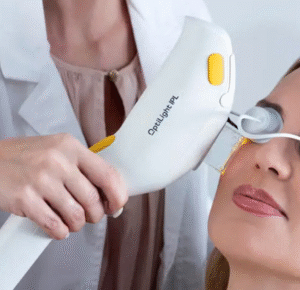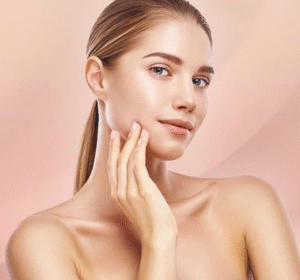1. Introduction to Temporomandibular Joint Dysfunction (TMD)
Temporomandibular joint dysfunction, commonly known as TMD, refers to pain and dysfunction in the jaw joint and surrounding muscles. It can result from various factors and lead to discomfort, difficulty chewing, and other symptoms.
2. Anatomy of the Temporomandibular Joint
The temporomandibular joint (TMJ) connects the jawbone to the skull and allows for movement during activities like chewing, speaking, and yawning. Dysfunction in this joint can cause pain and restricted movement.
3. Causes of TMD Pain
TMD pain can be caused by factors such as jaw misalignment, bruxism (teeth grinding), trauma or injury to the jaw joint, arthritis, stress, or muscle tension. Identifying the underlying cause is essential for effective treatment.
4. Symptoms of TMD
Common symptoms of temporomandibular joint dysfunction pain include jaw pain or tenderness, difficulty chewing or biting, clicking or popping sounds when moving the jaw, locking of the jaw joint, headaches, earaches, and facial pain.
5. Types of TMD
TMD encompasses various conditions affecting the temporomandibular joint, including muscle disorders, joint disorders, and a combination of both. Each type may present with different symptoms and require tailored treatment approaches.
6. Risk Factors for TMD
Risk factors for developing temporomandibular joint dysfunction pain include a history of jaw injury, arthritis, chronic stress, poor posture, dental issues such as malocclusion, and habits like teeth clenching or grinding.
7. Diagnosing TMD
Diagnosis of temporomandibular joint dysfunction pain involves a comprehensive evaluation by a healthcare provider, which may include a physical examination, imaging tests (such as X-rays or MRI), and assessing medical history and symptoms.
8. Conservative Treatments for TMD Pain
Conservative treatments for TMD pain focus on relieving symptoms and may include lifestyle modifications (such as stress management techniques), jaw exercises, physical therapy, wearing a nightguard to prevent teeth grinding, and using heat or cold therapy.
9. Medications for TMD Pain
Over-the-counter pain relievers (such as ibuprofen or acetaminophen) may help alleviate TMD pain and inflammation. In some cases, muscle relaxants or antidepressants may be prescribed to manage symptoms.
10. Dental Treatments for TMD
Dental treatments for temporomandibular joint dysfunction pain may include orthodontic adjustments, dental splints or mouthguards, occlusal adjustments (modifying the bite), or dental procedures to correct dental issues contributing to TMD.
11. Stress Management Techniques
Stress reduction techniques, such as relaxation exercises, mindfulness meditation, or counseling, can help alleviate TMD pain by reducing muscle tension and stress-related jaw clenching or grinding.
12. Physical Therapy for TMD
Physical therapy techniques, including jaw exercises, manual therapy, and modalities such as ultrasound or electrical stimulation, can help improve jaw function, reduce pain, and restore mobility in individuals with TMD.
13. Heat and Cold Therapy
Applying heat or cold packs to the jaw area can provide temporary relief from TMD pain and muscle tension. Alternating between heat and cold therapy may help reduce inflammation and promote relaxation of the jaw muscles.
14. Dietary Modifications
Soft diet modifications, such as avoiding hard or chewy foods that may exacerbate TMD symptoms, can help reduce jaw strain and discomfort. Eating smaller, more frequent meals and avoiding excessive jaw movements can also be beneficial.
15. Lifestyle Adjustments
Making lifestyle adjustments, such as practicing good posture, avoiding activities that strain the jaw (like chewing gum or biting nails), and incorporating stress-reduction techniques into daily routines, can help manage TMD pain and prevent flare-ups.
16. Avoiding Trigger Foods
Certain foods and beverages, such as hard candies, tough meats, and caffeinated drinks, may exacerbate TMD symptoms by requiring excessive chewing or contributing to muscle tension. Avoiding these trigger foods can help minimize discomfort.
17. Ergonomic Modifications
Ergonomic modifications to workspaces and daily activities can help reduce strain on the jaw and neck muscles. This may include adjusting computer monitor height, using supportive pillows, and practicing proper posture during activities.
18. Mouthguard Use
Wearing a custom-fitted mouthguard, especially at night, can help prevent teeth grinding and jaw clenching, which are common contributors to TMD pain. A dentist can provide a personalized mouthguard for optimal fit and effectiveness.
19. Stress Reduction Techniques
Stress management techniques, such as deep breathing exercises, yoga, or progressive muscle relaxation, can help reduce muscle tension and alleviate TMD pain associated with stress-induced jaw clenching or grinding.
20. Avoiding Excessive Jaw Movements
Avoiding activities that require excessive jaw movements, such as wide yawning, singing loudly, or prolonged talking, can help prevent strain on the jaw muscles and reduce TMD-related discomfort.
21. Posture Correction
Improving posture, particularly of the head, neck, and shoulders, can help alleviate TMD pain by reducing strain on the jaw muscles and promoting proper alignment of the temporomandibular joint.
22. Regular Exercise
Engaging in regular exercise, such as low-impact aerobic activities, stretching, and strengthening exercises, can help improve overall physical fitness and reduce muscle tension, which may alleviate TMD pain.
23. Hydration
Maintaining adequate hydration by drinking plenty of water throughout the day can help keep the jaw muscles and temporomandibular joint lubricated and functioning optimally, potentially reducing TMD-related discomfort.
24. Gentle Jaw Exercises
Performing gentle jaw exercises, such as opening and closing the mouth slowly, side-to-side movements, and resistance exercises with the hand, can help improve jaw mobility and reduce stiffness and pain associated with TMD.
25. Seeking Professional Help
Individuals experiencing persistent or severe TMD pain should seek professional help from a healthcare provider or dentist experienced in treating temporomandibular joint dysfunction. A personalized treatment plan can address specific symptoms and underlying causes to provide effective relief.





